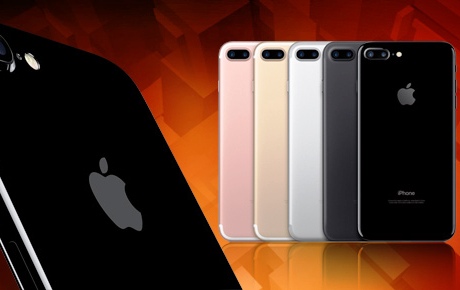“A salute to our hero … an inspiration to programming and application development community around the world, not only for iPhone, iPad tablet, & iPod professionals. We will miss you Steve …”
Coming from a very modest, virtually working class background, this guy transformed the world in about 10–12 years. Born in 1955, dropping out of college early, and starting a world-class company literally in a “garage” Steve Jobs embodies a modern world entrepreneurial hero to all, not only to the techie types. The most special characteristic of Steve Jobs was probably his way of looking at any object and knowing how to instill life in that object. This was true in designing his first Apple computer (in 1984) to his last inventions of designing iPhone, iPod and iPad tablets. Mobile phones are in existence for almost 18 years, being used by millions of users. Smartphones are also there almost for the 10 years with tremendous contributory inventions from RIM (Blackberry), Palm, Microsoft (Windows Mobile), and Nokia. These were the predecessors of today’s smart phones. But the way Steve Jobs looked at these mundane digital devices and transformed them for all people, literally for all people, suitable to natural usability and intuitive habits of an average user, nobody has ever done that. It is similar to taking an inanimate object in hand, and making that object live. (For more information on application development for iPhone and programming for iPhone, iPad, iPod and other mobile devices please look at this article on mobile developers & mobile programming).
Changing the digital world – what application development, programming community and App developers learned from Steve
 What Jobs understood well is the power of software. Although he contributed very successfully to the innovations of Mac and iPad, iPhone hardware, he leveraged in an unique way to the development of software for iPhone and iPad tablet computers. Before Apple mostly Palm and Blackberry (RIM) contributed to the semi-smartphones by including many device based applications (like smart calendars, financial stock quotes, games, some music and other mobile applications). These developments have created an evolutionary path for the smart mobile phones and tablets we see today. Unfortunately Microsoft tried to catch up only by incremental developments (it is to be noted that Microsoft is experimenting and tweaking with mobile smartphones and tablet type devices from the late 1990s). Steve Jobs and Apple are the first ones to join the dots in seeing the future. Jobs’ most notable foresight is probably understanding what consumers really want. Touch screens, Gyroscopes, and colorful applications finally brought life to those mundane and boring applications in average consumers’ hand. Today’s eReaders (like Amazon’s Kindle, and Barnes & Noble’s Nook) are all evolutionary functions built on top of iPhone, iPad and other related technologies. No doubt there will be a lot of many such innovations over present day’s smartphone technologies which will change our world. In the next 20-30 years we will communicate differently, we will read differently, we will entertain differently – very differently (we cannot see anything beyond that time frame – it’s too blurred). How different our digital future will be – we don’t know. People like Steve Jobs would have been able to give some hints on that unknown, but exciting future. (The good news for application developers around the world is – application development and programming for iPhone type smart phones and iPad type smart tablets will speed up. Your app development and programming can make a huge difference. However the unknown is how we step up and try to change this world, remembering the way Steve Jobs did it).
What Jobs understood well is the power of software. Although he contributed very successfully to the innovations of Mac and iPad, iPhone hardware, he leveraged in an unique way to the development of software for iPhone and iPad tablet computers. Before Apple mostly Palm and Blackberry (RIM) contributed to the semi-smartphones by including many device based applications (like smart calendars, financial stock quotes, games, some music and other mobile applications). These developments have created an evolutionary path for the smart mobile phones and tablets we see today. Unfortunately Microsoft tried to catch up only by incremental developments (it is to be noted that Microsoft is experimenting and tweaking with mobile smartphones and tablet type devices from the late 1990s). Steve Jobs and Apple are the first ones to join the dots in seeing the future. Jobs’ most notable foresight is probably understanding what consumers really want. Touch screens, Gyroscopes, and colorful applications finally brought life to those mundane and boring applications in average consumers’ hand. Today’s eReaders (like Amazon’s Kindle, and Barnes & Noble’s Nook) are all evolutionary functions built on top of iPhone, iPad and other related technologies. No doubt there will be a lot of many such innovations over present day’s smartphone technologies which will change our world. In the next 20-30 years we will communicate differently, we will read differently, we will entertain differently – very differently (we cannot see anything beyond that time frame – it’s too blurred). How different our digital future will be – we don’t know. People like Steve Jobs would have been able to give some hints on that unknown, but exciting future. (The good news for application developers around the world is – application development and programming for iPhone type smart phones and iPad type smart tablets will speed up. Your app development and programming can make a huge difference. However the unknown is how we step up and try to change this world, remembering the way Steve Jobs did it).
We will miss you Steve …
For a detailed view on Steve Jobs, the visionary leader, please look at the Jobs article in the New York Times.



